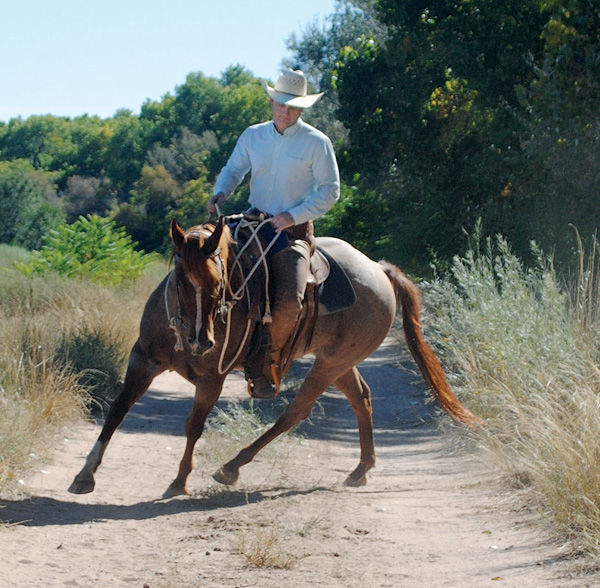If you’re sometimes nervous when riding your horse, you probably spend a lot of time trying to keep something bad from happening. You want everything calm, and your horse moving quietly. By contrast, I’m going to encourage you to spend more time actively riding your horse, changing things up and asking him to do all sorts of different maneuvers.

Why? Because trying to stop something from happening is a negative, whereas asking for a response is a positive. Plus, it gets you more quickly where you really want to be anyway: in complete control.
Thinking active rather than passive is a significant change in perspective, but it can make all the difference to your confidence in the saddle. Here’s why.
You’re the pilot. I find riders generally understand the concept of keeping their horse straight—that is, aligned between the reins—but then they use it as an excuse to avoid “mixing it up.” My dad’s a pilot, and what he told me applies in spades to riding. I’d be tentative at the controls, just trying to keep the plane on an even keel, and he’d grab the yoke and pull it assertively to show me what he wanted. “To have control, you must take control,” he’d say. It’s the same with your horse. Instead of just letting him ease along, take control by directing him to turn, stop, back up, circle. Doing this makes it clear that you’re the boss. Your horse starts looking to you for direction and develops the habit of following your lead.
Start easy and build. What you ask of your horse can be as simple as loops and turns at a steady trot. It doesn’t have to be fancy; you can build gradually to more advanced maneuvers and lateral work, including sidepassing, over time. But anything that requires your horse to listen and change what he’s doing helps him—and you—focus. Don’t be afraid to put your leg on and ask him to respond; you’re not going to break anything. As a bonus, asking your horse to move in different ways helps to keep him from feeling claustrophobic, the way he might if you’re always holding him straight between the reins.
You move, too. For this approach to work, you must be relaxed and moving yourself. Don’t sit rigidly in the saddle; instead, breathe deeply and stay loose. Watch really good riders in action, and you’ll see how much they move their bodies to stay with their horse’s movement and look “still” in the saddle. This is a bit of a catch-22, of course, because you need confidence to move, but you need to move to gain confidence. My advice is to fake it until you make it. In other words, experiment with moving around more a little at a time. As you find how much it improves your riding, it’ll become easier to do.
Be smart—and safe. If you ultimately find yourself reluctant to take this kind of can-do control over your horse, seek professional help. A good coach can get you over the hump safely, after which you can keep building and advancing with a growing set of maneuvers and exercises.
Ty Brazeal is a lifelong horseman who specializes in proper foundation training for horses of all ages and disciplines. Many of those he works with go on to compete in reining, roping, barrel racing, competitive trail, and other events. He also helps recreational riders. Ty conducts clinics throughout the southwest and California and provides colt-starting and rehabilitation services from his home in Los Lunas, New Mexico (tybrazeal.com).






